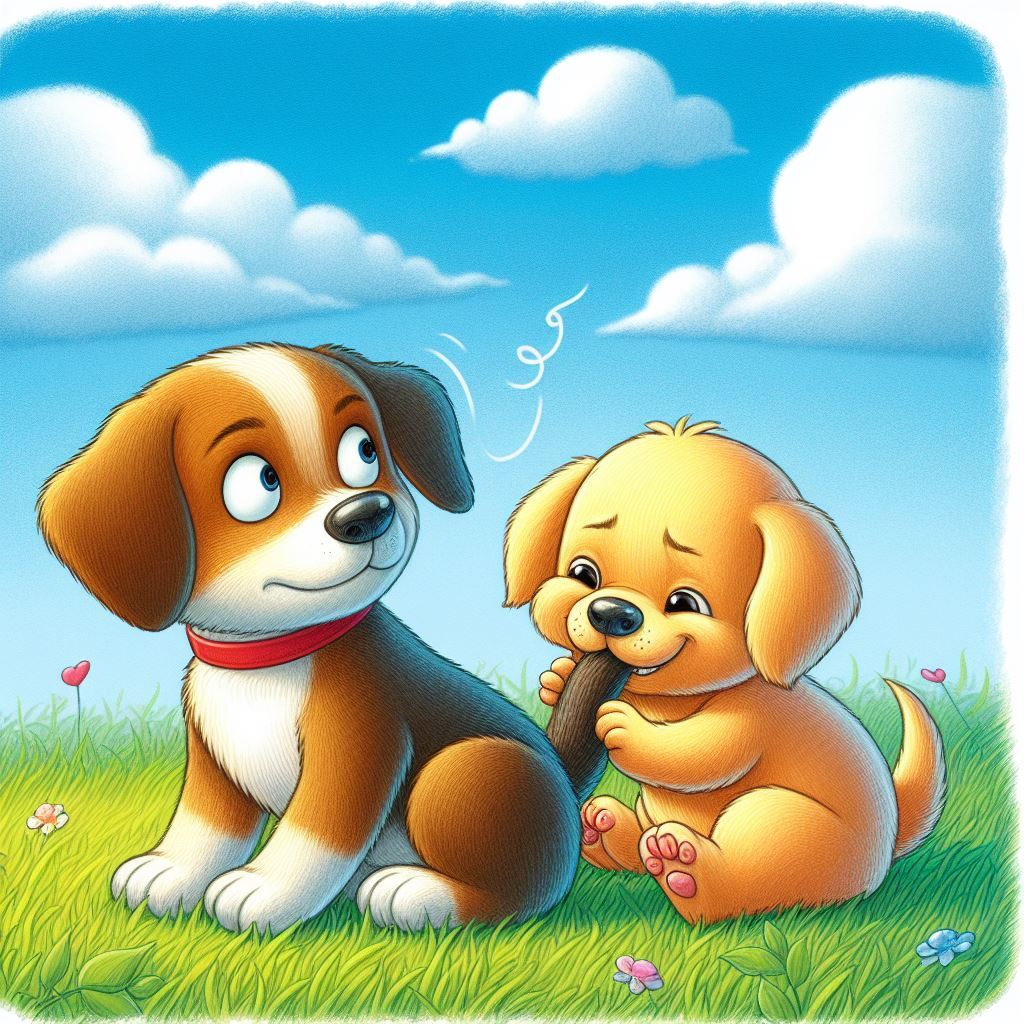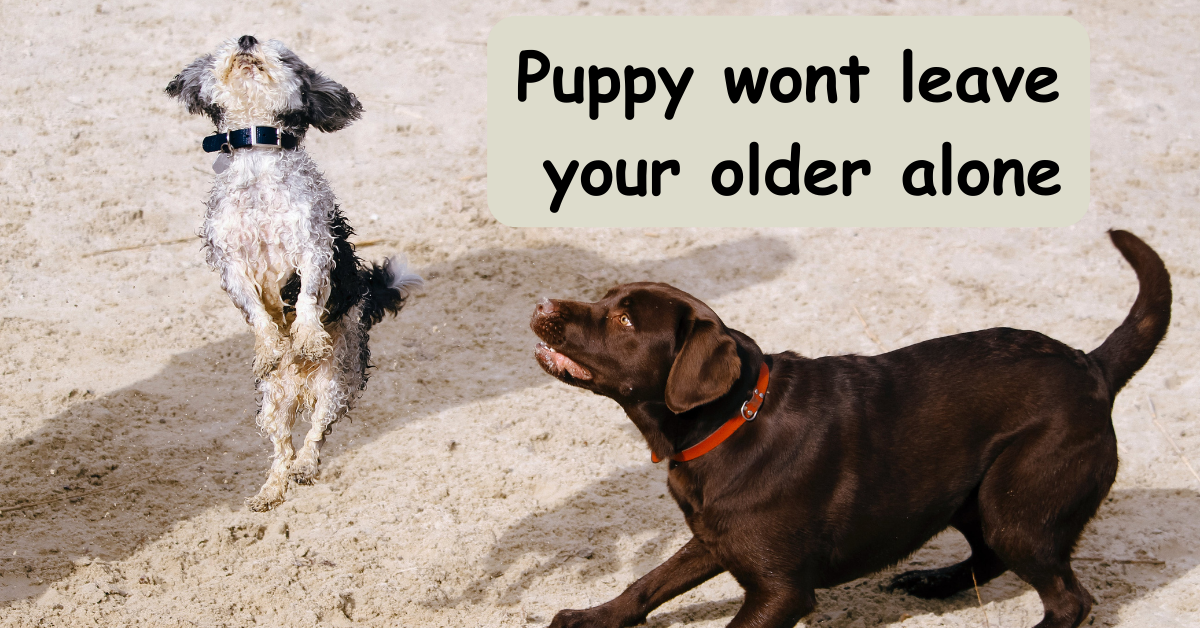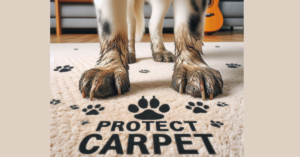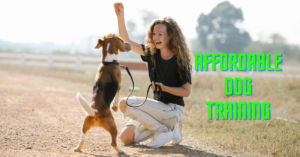Introduction
In the world of canine companionship, the dynamics between older and younger dogs can be both heartwarming and complex. Especially when your puppy wont leave older alone. Picture this: a lively, energetic puppy bounding around the house, eager to play and explore, while an older, more seasoned dog looks on with a mixture of patience and exasperation. This scenario is all too familiar for many dog owners who have witnessed the relentless attention that a young pup can bestow upon their older counterpart. The interplay between these two age groups can lead to a myriad of behaviors, some endearing and others slightly aggravating. In this article, we delve into the fascinating dynamic of a young puppy’s unwavering fixation on an older dog and explore the reasons behind this behavior.
From incessant tail-tugging to persistent attempts at playtime initiation, it’s not uncommon for a puppy to shower an older dog with attention that borders on relentless. While some may find it adorable to witness this display of youthful exuberance, others may wonder about the underlying motivations driving such behavior. What prompts a puppy to continually pester an older dog? Is it simply innocent curiosity or does it stem from deeper instincts rooted in pack dynamics? Join us as we unravel the intricacies of this age-old tale – quite literally – and gain insights into why your puppy just won’t leave your older dog alone.
Age difference and pack hierarchy
Age difference and pack hierarchy play crucial roles in shaping the dynamics of social groups, whether it’s in the animal kingdom or human society. In a wolf pack, for example, older wolves typically hold higher positions in the hierarchy due to their experience and wisdom. Similarly, in human organizations, age often correlates with authority and respect. However, it’s important to recognize that age alone shouldn’t define one’s position in the pack; qualities such as leadership skills and strategic thinking also play significant roles.
It’s essential to understand how age difference can impact cooperation within a group. While younger members may bring fresh perspectives and energy, older members often provide stability and guidance. This dynamic interplay contributes to a balanced ecosystem within the group, allowing for innovation while maintaining established norms. By appreciating these nuances rather than simply relying on traditional notions of seniority or youthfulness, we can foster more inclusive and effective group dynamics across various contexts.
Lack of socialization, playfulness, seeking attention
One major factor to a pup pestering an older dog could be a lack of proper socialization during the puppy’s early developmental stages. Without exposure to other dogs and positive social interactions, the puppy may struggle to understand appropriate boundaries when interacting with older dogs.
Another reason could simply be the playful nature of puppies. Their boundless energy and eagerness to engage in play can come across as pestering to older, more mellow dogs. This mismatch in energy levels and play style can lead to frustration and tension between the two.
Training, exercise, separation when necessary
It can be frustrating when a your puppy wont leave older dog alone, but there are effective behavioral solutions to help manage this situation. Firstly, providing proper training for the puppy is essential. Teaching commands like leave it and go to your bed can help redirect their attention away from bothering the older dog. Additionally, ensuring the puppy gets enough exercise is crucial in managing their energy levels and reducing their need to constantly bother the older dog.
In some cases, separation may be necessary to give both dogs a break. Utilizing baby gates or crates can create opportunities for the older dog to have some peaceful time alone. It’s also important to offer plenty of individual attention and playtime with each dog separately to satisfy their needs for interaction and prevent excessive reliance on one another. By addressing these behaviorally appropriate measures, you can promote healthier interactions between your puppy and older dog while maintaining a positive environment for both pets.

Supervised playtime, positive reinforcement
One effective strategy to manage the constant attention of a puppy towards an older dog is through supervised playtime. By setting aside dedicated play sessions where both dogs are closely monitored, you can ensure that the older dog gets the rest it needs while allowing the puppy to engage in social interaction and play. This helps establish boundaries and teaches the puppy appropriate behavior around other dogs.
Another valuable approach is positive reinforcement. Whenever the older dog displays patience or tolerance towards the puppy, rewarding them with treats or praise can reinforce this desirable behavior. Similarly, gently redirecting the puppy’s attention away from the older dog and redirecting it towards toys or activities can help minimize their excessive focus on their elder counterpart. It’s crucial to create a positive association for both dogs when they engage in appropriate social interactions, as this will encourage more harmonious bonding between them.
By incorporating these strategies into your routine, you’ll not only facilitate better social interaction between your two canine companions but also establish a balanced and respectful dynamic that allows both dogs to coexist happily. With careful oversight and consistent positive reinforcement, you can help your pup learn important social skills while ensuring your older dog receives the peace and quiet they deserve.
Final Thoughts
Addressing the issue of a puppy who cannot leave your older dog alone is crucial for fostering harmony between the two pets. By understanding their individual needs and behaviors, pet owners can take proactive steps to create a peaceful environment for both animals. This may involve providing separate spaces, setting boundaries, and ensuring that each dog receives attention and exercise tailored to their age and energy levels. Additionally, seeking professional guidance from a veterinarian or animal behaviorist can offer valuable insights into managing the dynamics between the dogs. Ultimately, by proactively working towards harmony, pet owners can ensure a happy and harmonious coexistence between their furry companions. It’s important to remember that with patience, consistency, and love, it is possible to achieve a balanced relationship between pets.




